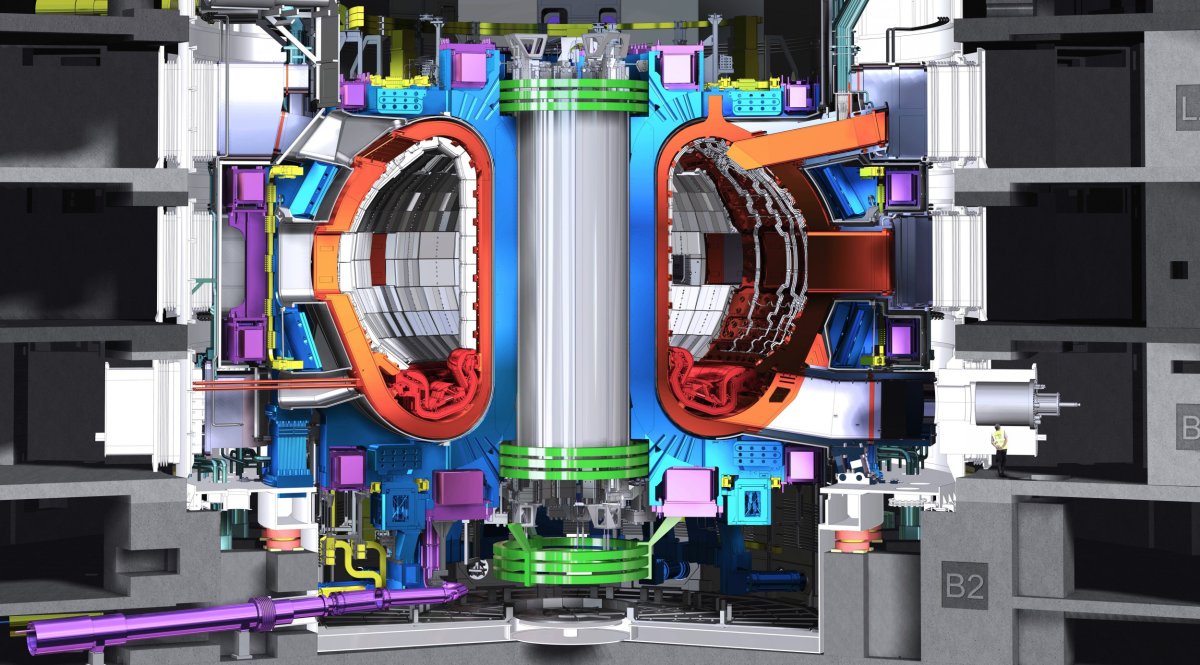The strongest magnet in the world, allegedly capable of lifting an aircraft carrier, is set to head to France, where it will be used as part of a nuclear fusion generator.
The 59-foot tall, 1,000-ton Central Solenoid magnet will form a crucial part of the fusion generator because it will use its intense magnetic field to control a band of superheated plasma at temperatures of tens of millions of degrees.
The fusion generator is known as ITER—the International Thermonuclear Experimental Reactor. It is essentially a Sun simulator.
Scientists will use it to attempt nuclear fusion, the same process that powers our nearest star. By harnessing the intense heat that results, scientists will turn water into steam which will then power generators.
The power of the Central Solenoid can be understood when compared to other, more sensible magnets.
Magnetic field strengths can be measured in units of Tesla (T). The Earth's magnetic field strength is anywhere between 0.000025 and 0.000065 T, according to the National Oceanic and Atmospheric Administration. A strong refrigerator magnet is said to be around 0.01 T.
MRI machines routinely used in hospitals generally have strengths of between 1.5 and 3 T. These are capable of attracting metal chairs and other objects from across rooms.
The Central Solenoid will reach a magnetic field strength of 13 Tesla—hundreds of thousands of times stronger than the Earth's field.
The magnet was manufactured by General Atomics—which also produces military drones—in partnership with U.S. ITER.
In a joint statement, ITER and General Atomics said the support structures holding the magnet "will have to withstand forces equal to twice the thrust of a space shuttle lift-off."
The statement adds: "Its magnetic force is strong enough to lift an aircraft carrier 6 feet into the air."
Dr. Michael Mauel, a plasma expert at Columbia University, said in the statement: "Delivery of the first ITER Central Solenoid module is an exciting milestone for the demonstration of fusion energy and also a terrific achievement of U.S. capacity to build very large, high-field, high-energy superconducting magnets."
Scientists have been chasing nuclear fusion power for decades. It emits no greenhouse gas, and its fuel, deuterium, can be found in seawater. It can provide energy around the clock.
What's more, despite the incredibly high operating temperatures of around 150 million degrees Celsius (270 million degrees Fahrenheit), ITER claims the process cannot result in any kind of run-away reaction because any disruption of the process would cause it to stop.
But nuclear fusion is incredibly difficult to maintain. It involves heating deuterium and hydrogen to very high temperatures until they form a plasma, which then has to be controlled so that it does not touch the metal walls of the reactor.
The problem with many fusion reactors is that scientists have not yet found a way to make them produce more energy than they need to work. ITER is part of ongoing research into overcoming this hurdle.

Uncommon Knowledge
Newsweek is committed to challenging conventional wisdom and finding connections in the search for common ground.
Newsweek is committed to challenging conventional wisdom and finding connections in the search for common ground.
About the writer
To read how Newsweek uses AI as a newsroom tool, Click here.








